Coffee is more than just a morning ritual – it’s how millions of us jumpstart our day. While a basic cup offers antioxidants and energy benefits, the way we prepare and consume it makes all the difference.
With a few simple tweaks, your daily brew can become a health-boosting beverage rather than just a caffeine delivery system.
1. Skip the Sugar
Those sugar packets might seem harmless, but they’re secretly sabotaging your healthy coffee routine. Just one teaspoon adds empty calories and triggers insulin spikes that lead to energy crashes later.
Sugar in coffee becomes particularly problematic when it becomes habitual – many people don’t realize they’re consuming 100+ extra calories daily just through sweetened coffee. Your taste buds can adapt to unsweetened coffee in just 1-2 weeks.
Try gradually reducing sugar over several days, or go cold turkey and push through the adjustment period. Black coffee’s natural flavors – from caramel to fruit notes – become more noticeable once sugar isn’t masking them.
2. Use Natural Sweeteners
Natural alternatives provide sweetness without the blood sugar rollercoaster of refined sugar. Raw honey delivers antioxidants and antibacterial properties while adding gentle sweetness – just use sparingly since it still contains calories.
Stevia stands out as a zero-calorie option derived from plant leaves, requiring just a tiny pinch for significant sweetness. Monk fruit extract offers similar benefits with no bitter aftertaste. Pure maple syrup brings minerals like manganese and zinc, though it should be used minimally.
Dates make wonderful sweeteners too – blend a single date with a splash of water to create a natural syrup. Remember that moderation matters even with natural options – aim for just enough to enhance, not overpower.
3. Try Plant-Based Milks
Almond milk creates a silky coffee with nutty undertones and just 30 calories per cup – a dramatic reduction from whole milk’s 150 calories. Its subtle flavor complements rather than competes with coffee’s natural profile.
Oat milk has gained massive popularity for good reason – it creates the creamiest texture of plant milks while containing beneficial fiber. Coconut milk adds tropical richness plus medium-chain triglycerides that support brain function. Soy provides the highest protein content among non-dairy options.
When shopping, choose unsweetened versions without carrageenan or excessive additives. Barista blends foam better for lattes and cappuccinos. Most plant milks now come in shelf-stable versions perfect for travel or emergency coffee situations!
4. Add a Pinch of Cinnamon
Cinnamon transforms ordinary coffee into something special while providing remarkable health benefits. This ancient spice contains compounds that mimic insulin, potentially helping your body process glucose more effectively and stabilizing post-coffee blood sugar levels.
Beyond blood sugar regulation, cinnamon delivers powerful antioxidants that fight inflammation throughout your body. Its warming aroma activates your senses while its natural sweetness makes sugar seem less necessary.
Sprinkle ground cinnamon directly into your coffee grounds before brewing for best flavor integration. Alternatively, dust it over the finished cup or stir with a cinnamon stick. Ceylon cinnamon (versus the more common Cassia variety) offers a more delicate flavor and lower levels of coumarin, making it ideal for daily consumption.
5. Stay Hydrated Alongside Coffee
Coffee’s diuretic effect is often exaggerated, but it still increases fluid output. Combat potential dehydration by making water your coffee’s constant companion – try the one-for-one rule: one glass of water for every coffee consumed.
Morning coffee drinkers benefit especially from hydrating first thing, as we naturally wake up slightly dehydrated. Keep a water bottle visible near your coffee mug as a visual reminder. Some coffee shops now automatically serve water alongside espresso drinks – there’s wisdom in this tradition!
Proper hydration enhances coffee’s energizing effects while preventing headaches, fatigue, and concentration problems that dehydration causes. The water-coffee pairing also cleanses your palate between sips, allowing you to appreciate coffee’s complex flavors more fully.
6. Avoid Artificial Creamers
Those convenient coffee creamers hiding in your fridge harbor a startling secret – many contain partially hydrogenated oils (trans fats) despite labels claiming “0 grams trans fat” (a loophole allows this if under 0.5g per serving).
The ingredient lists reveal the truth: corn syrup solids, vegetable oils, and artificial flavors dominate. These highly processed ingredients have been linked to inflammation and increased heart disease risk. Many also contain carrageenan, an additive that causes digestive distress in sensitive individuals.
Real alternatives exist! Organic half-and-half provides authentic creaminess without additives. For dairy-free options, coconut cream or cashew cream deliver rich texture naturally. Making your own creamer lets you control ingredients – blend nuts with water and a touch of vanilla for a clean, delicious option.
7. Limit Coffee to 1–3 Cups a Day
Finding your personal coffee sweet spot matters more than you might think. Research consistently shows health benefits peak at moderate consumption – typically 1-3 cups daily – while diminishing or reversing with excessive intake.
Moderation helps prevent caffeine’s unwanted side effects: anxiety, restlessness, increased heart rate, and disrupted sleep. Your body’s caffeine processing ability varies based on genetics, medications, and even hormonal fluctuations, which explains why sensitivity changes throughout life.
Pay attention to your body’s signals – jitters, afternoon energy crashes, or nighttime insomnia suggest you’ve exceeded your optimal limit. Remember that cup sizes matter tremendously – a standard 8oz cup contains roughly 95mg caffeine, while a 16oz coffee shop serving might deliver 190mg or more!
8. Add Healthy Fats (in moderation)
Healthy fats transform coffee into a satisfying mini-meal that stabilizes energy and enhances nutrient absorption. MCT oil, extracted from coconut, converts quickly into ketones – molecules your brain loves using for fuel – potentially improving mental clarity and focus.
Grass-fed butter contains beneficial omega-3 fatty acids, CLA (conjugated linoleic acid), and fat-soluble vitamins absent in conventional butter. A teaspoon of coconut oil adds tropical flavor while providing lauric acid, which has antimicrobial properties.
Start with tiny amounts – just ½ teaspoon – and blend thoroughly for proper emulsification. Gradually increase if desired, but remember these additions contribute calories. This approach works best when replacing breakfast rather than alongside a full meal, making it ideal for intermittent fasting protocols or busy mornings.
9. Time Your Coffee Right
Morning isn’t always the optimal coffee time, despite what tradition suggests. Your body naturally produces cortisol (a wakefulness hormone) between 8-9am, making added caffeine less effective and potentially increasing tolerance.
Mid-morning (9:30-11:30am) often proves ideal – cortisol dips naturally then, making coffee’s effects more pronounced with less caffeine needed. Afternoon consumption requires careful timing; caffeine’s 5-6 hour half-life means a 3pm cup can still affect 9pm sleep quality.
Genetic differences influence how quickly you metabolize caffeine – some people process it completely within 4 hours while others take 12+ hours for the same amount. Experiment with timing and observe effects on your energy, productivity, and sleep to discover your personal optimal schedule. Coffee before workouts can enhance performance and fat burning for many people.
10. Use Organic Coffee Beans
Coffee ranks among the most heavily sprayed crops worldwide, with conventional beans often containing residues from multiple pesticides. Since coffee beans are dried rather than washed thoroughly like fruits, these chemicals can persist through processing.
Organic certification ensures beans grow without synthetic pesticides, herbicides, or fertilizers – creating a cleaner cup for you and safer conditions for farmers. The environmental impact extends beyond your cup; organic growing practices protect soil health, water quality, and biodiversity in coffee-growing regions.
Many coffee lovers report organic beans taste noticeably better, with more pronounced flavor notes. While typically costing 20-30% more than conventional, the price difference becomes minimal when brewing at home versus buying prepared coffee. Look for beans with both organic and Fair Trade certifications for maximum ethical impact.
11. Don’t Drink on an Empty Stomach
That first-thing coffee ritual might be setting you up for digestive distress and energy problems. Coffee stimulates acid production and can irritate your stomach lining when consumed without food, potentially triggering heartburn or discomfort even in people who don’t normally experience reflux.
Coffee also triggers a blood sugar response – without food to buffer this effect, you might experience energy spikes followed by crashes. Many people report anxiety, jitters or “coffee stomach” when drinking before eating, yet feel fine with the exact same coffee consumed alongside breakfast.
Simple solutions include having a small bite first (even half a banana or few almonds helps), adding milk/cream to buffer acidity, or shifting coffee time 30 minutes after breakfast. Your digestion will thank you, and you’ll likely experience more sustained energy throughout the morning.
12. Try Cold Brew
Cold brew’s gentle extraction method creates a fundamentally different coffee experience. The long, cool steeping process (12-24 hours) pulls fewer acidic compounds from beans, resulting in coffee with up to 67% less acidity than hot brewing methods.
People with sensitive stomachs or acid reflux often tolerate cold brew beautifully even when hot coffee causes discomfort. The lower acidity also showcases different flavor notes – expect more chocolate, caramel and nutty tones with less bitterness.
Making cold brew at home saves money and couldn’t be simpler: combine coarsely ground coffee with cold water (1:4 ratio), steep overnight in your refrigerator, then strain. The resulting concentrate keeps for up to two weeks and can be diluted with water or milk. Bonus: cold brew contains slightly more caffeine than regular coffee, so you may need less!
13. Watch the Portion Size
Coffee cup sizes have experienced dramatic inflation over decades – what was once a standard 6-8oz serving has morphed into 16-20oz behemoths at many coffee shops. These oversized portions deliver 2-3 times the caffeine and often hundreds of extra calories from milk and flavorings.
Returning to reasonable portions helps moderate caffeine intake while making specialty drinks more affordable and less calorie-dense. A traditional cappuccino actually contains just 5-6oz total volume including milk foam – perfect for savoring quality over quantity.
At home, try using smaller cups that hold 8-10oz maximum. When ordering out, request a “small” regardless of what the shop calls it, or try European-style drinks which maintain traditional smaller portions. For flavor satisfaction in a smaller package, a well-made 8oz latte can deliver more enjoyment than a massive, watered-down version.
14. Add Unsweetened Cocoa Powder
Raw cocoa powder transforms ordinary coffee into a mocha-inspired treat while adding impressive nutritional benefits. Just a teaspoon provides flavanols that support heart health by improving blood vessel function and reducing inflammation.
Unlike sugary chocolate syrups, pure cocoa contains minimal calories (about 12 per tablespoon) yet delivers magnesium, iron, and zinc. The rich chocolate flavor satisfies sweet cravings naturally, often eliminating the perceived need for sugar. Many people find cocoa’s slight bitterness complements coffee perfectly.
For best results, choose natural unsweetened cocoa powder without alkalization (“Dutch processing”), which preserves more antioxidants. Mix the powder with a small amount of hot coffee first to prevent clumping, then add to your full cup. For extra indulgence, add a dash of cinnamon or vanilla extract – the combination creates remarkable depth without added sugar.
15. Avoid Flavor Syrups
Those colorful bottles lining coffee shop counters hide a concerning secret – just one pump of flavored syrup contains about 5 grams of sugar, primarily high-fructose corn syrup. A typical flavored latte contains 3-4 pumps, adding 15-20 grams of sugar before any whipped cream or toppings.
Beyond sugar content, commercial syrups often contain artificial flavors, preservatives, and caramel coloring (which contains 4-methylimidazole, a potential carcinogen). The intense sweetness also trains your palate to expect increasingly sweeter foods and beverages.
Create healthier flavor profiles using pure extracts instead – vanilla, almond, or hazelnut extracts provide concentrated flavor without sugar or chemicals. Spices like cardamom, nutmeg, or star anise can be ground with your beans for exotic notes. For occasional sweetness, try making simple syrups using real ingredients like vanilla beans or cinnamon sticks.
16. Make it a Protein Coffee
Protein-enhanced coffee transforms your morning cup from a simple caffeine delivery into a nutritional powerhouse. Adding unflavored collagen peptides (about 10g) provides structural protein that supports skin elasticity, joint health, and gut function without altering coffee’s flavor.
Whey protein creates a frothier, more filling beverage while delivering complete amino acids that support muscle maintenance and growth. Plant proteins like pea or hemp work wonderfully for vegans. The protein-caffeine combination creates more sustained energy by slowing caffeine absorption and stabilizing blood sugar.
For easiest mixing, use a small blender or frother – simply stirring often leaves clumps. The morning protein boost is particularly valuable since many Americans consume insufficient protein at breakfast, when muscle protein synthesis rates are highest. Just 15-20g protein turns your coffee into a mini-meal that supports metabolism and satiety.
17. Don’t Rely on Coffee for Energy
Using coffee as your primary energy source creates a problematic dependency cycle. When fatigue stems from poor sleep, stress, or nutritional gaps, caffeine merely masks these underlying issues rather than addressing them.
Healthy energy comes first from quality sleep – even one additional hour can dramatically reduce coffee dependency. Regular movement throughout the day improves circulation and oxygen delivery to your brain, often providing more sustainable energy than another cup. Balanced meals containing protein, healthy fats and complex carbs prevent the blood sugar fluctuations that trigger fatigue.
Challenge yourself to identify your true energy drains – is it actually sleep debt, dehydration, excessive screen time, or nutrient deficiencies? Address these root causes while enjoying coffee as an occasional enhancement rather than a necessity. Many people find they naturally require less coffee when their fundamental health needs are met.
18. Gradually Reduce Sugar
Sugar addiction in coffee happens gradually – and breaking free follows the same pattern in reverse. Your taste buds have likely adapted to expect intense sweetness, but they can readjust with surprising speed when given the chance.
Start by measuring exactly how much sugar you currently use – many people are shocked to discover they’re adding 3-4 teaspoons daily. Each week, reduce by ¼ teaspoon until you reach your target. This incremental approach prevents the sense of deprivation that leads to abandoning healthy changes.
During the transition, cinnamon, vanilla extract, or a milk with natural sweetness (like oat milk) can help satisfy your sweet tooth. The remarkable reward awaits – most people report actually tasting coffee’s complex flavors for the first time after reducing sugar. Many former sugar-dependents eventually prefer their coffee completely unsweetened!
19. Avoid Reheating Coffee
That innocent microwave reheat significantly degrades your coffee’s health benefits and flavor profile. Coffee contains chlorogenic acids and other polyphenols with antioxidant properties – these compounds break down rapidly with extended heat exposure or reheating.
The flavor suffers equally as volatile aromatic compounds evaporate and acids degrade, creating that distinctly bitter, flat taste of reheated coffee. Reheating also intensifies coffee’s acidity, potentially increasing stomach irritation for sensitive individuals.
Instead, invest in a quality thermal mug that maintains temperature for hours without continued heat application. For home brewing, consider smaller batch sizes that you’ll finish while fresh. French press or pour-over methods make single cups easy. If you must preserve coffee for later, refrigerate it immediately after brewing, then enjoy it as iced coffee rather than reheating.
20. Clean Your Coffee Equipment
Your coffee maker harbors a disturbing secret – studies show about half contain yeast and mold growth in their reservoirs. These microorganisms not only affect flavor but can trigger reactions in sensitive individuals or those with compromised immunity.
Coffee oils build up inside equipment, eventually turning rancid and creating bitter off-flavors. The solution is simple yet often overlooked: regular cleaning. For drip machines, monthly cleaning with equal parts water and white vinegar removes mineral buildup and sanitizes internal components.
Don’t forget grinders, which collect oils that turn stale. A weekly wipe-down prevents old grounds from contaminating fresh beans. French presses and pour-over equipment need thorough washing after each use – the mesh filters in particular trap coffee oils. This maintenance not only creates healthier coffee but extends equipment life and improves flavor dramatically.
21. Choose Coffee with Functional Ingredients
Innovative coffee blends now incorporate adaptogens and superfoods that transform your cup into a therapeutic experience. Lion’s mane mushroom extract supports cognitive function and nerve health without adding mushroom flavor to your brew. Chaga mushroom delivers exceptional antioxidant properties that complement coffee’s own protective compounds.
Turmeric-infused coffee combines anti-inflammatory benefits with caffeine’s energy boost – particularly effective when paired with black pepper for enhanced curcumin absorption. Adaptogens like ashwagandha help moderate cortisol response, potentially reducing caffeine’s stress-inducing effects.
Look for these ingredients in premixed coffees or add them yourself with high-quality powders or tinctures. Start with small amounts to assess tolerance and taste preferences. While slightly more expensive than regular coffee, these functional blends can replace multiple supplements while making your morning ritual more beneficial without extra effort.
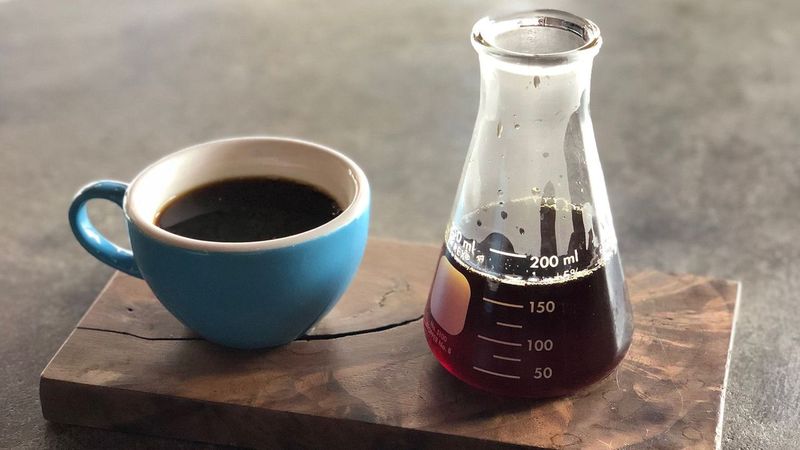
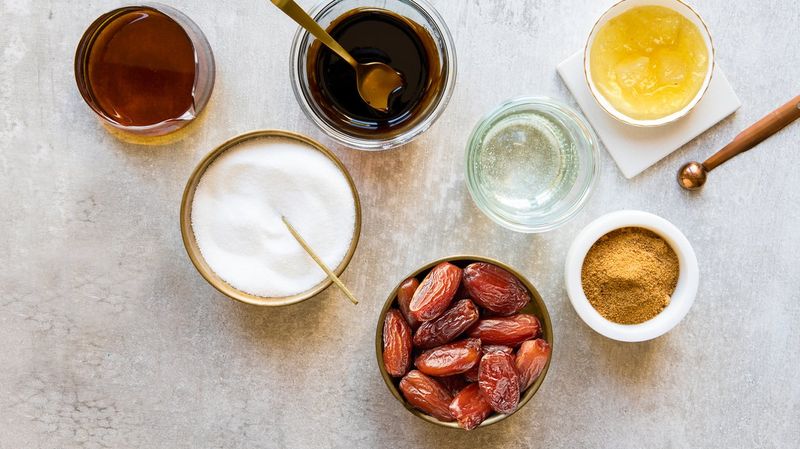
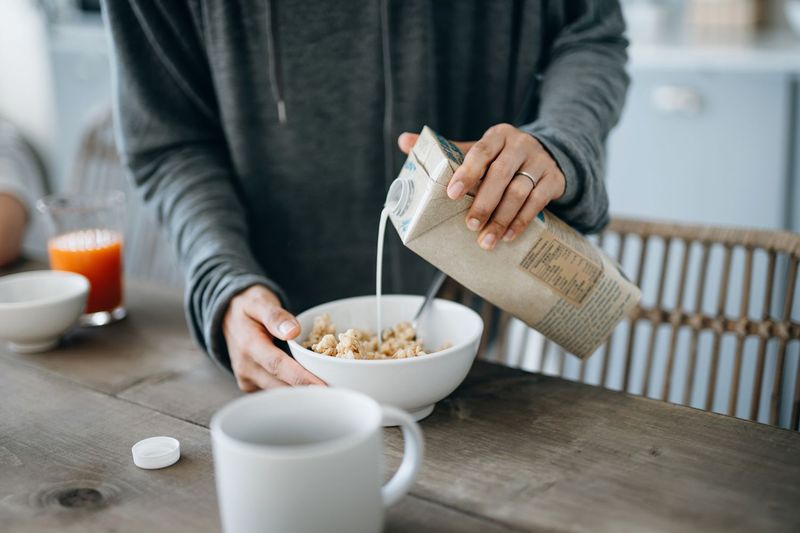




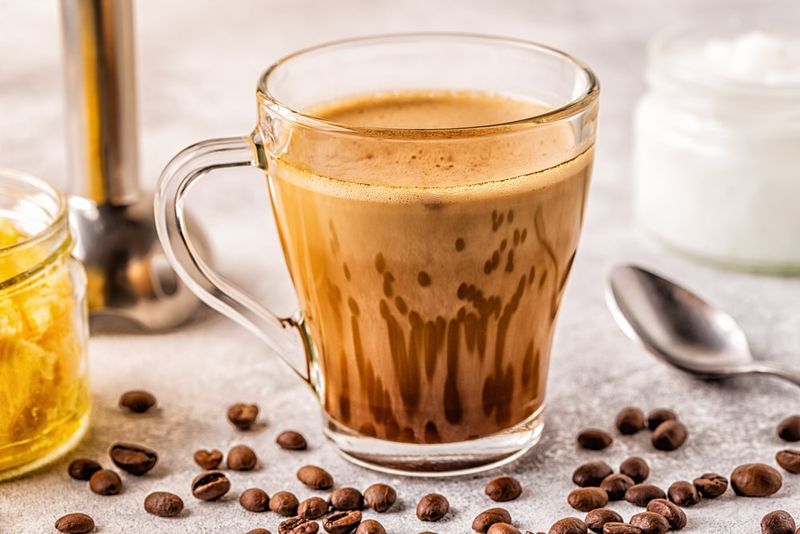

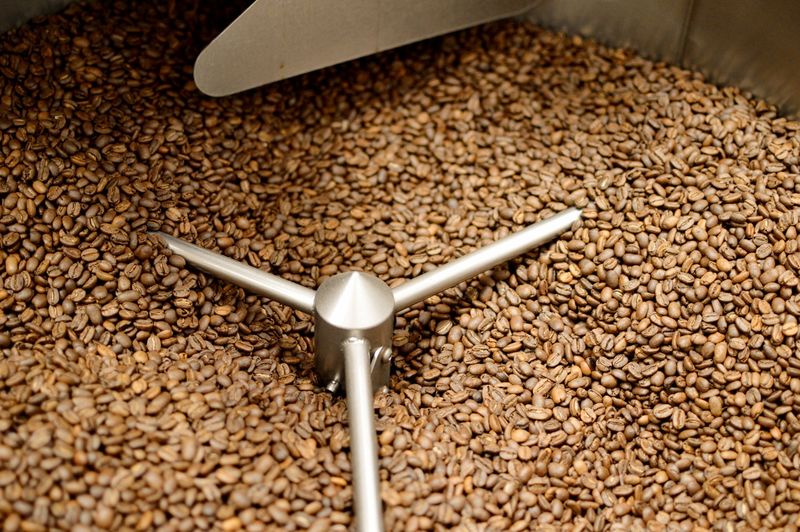











Leave a comment